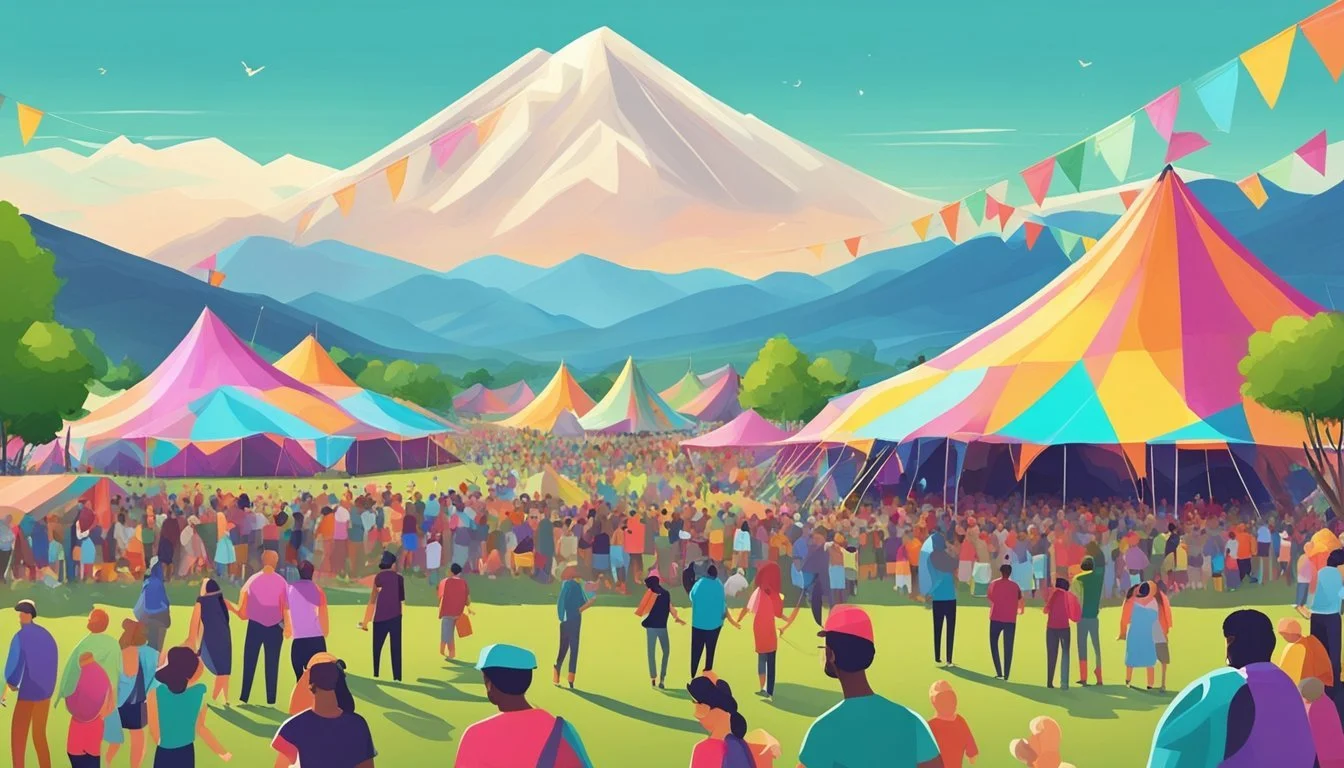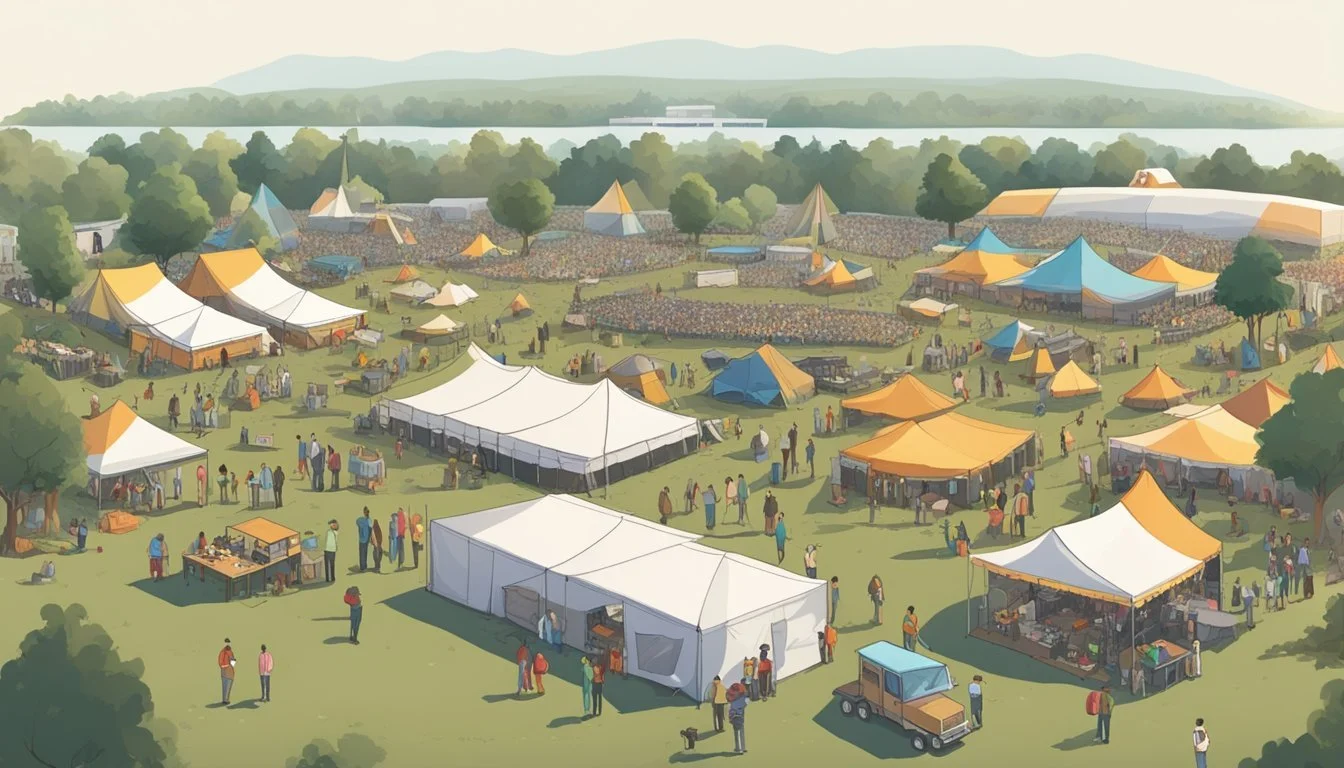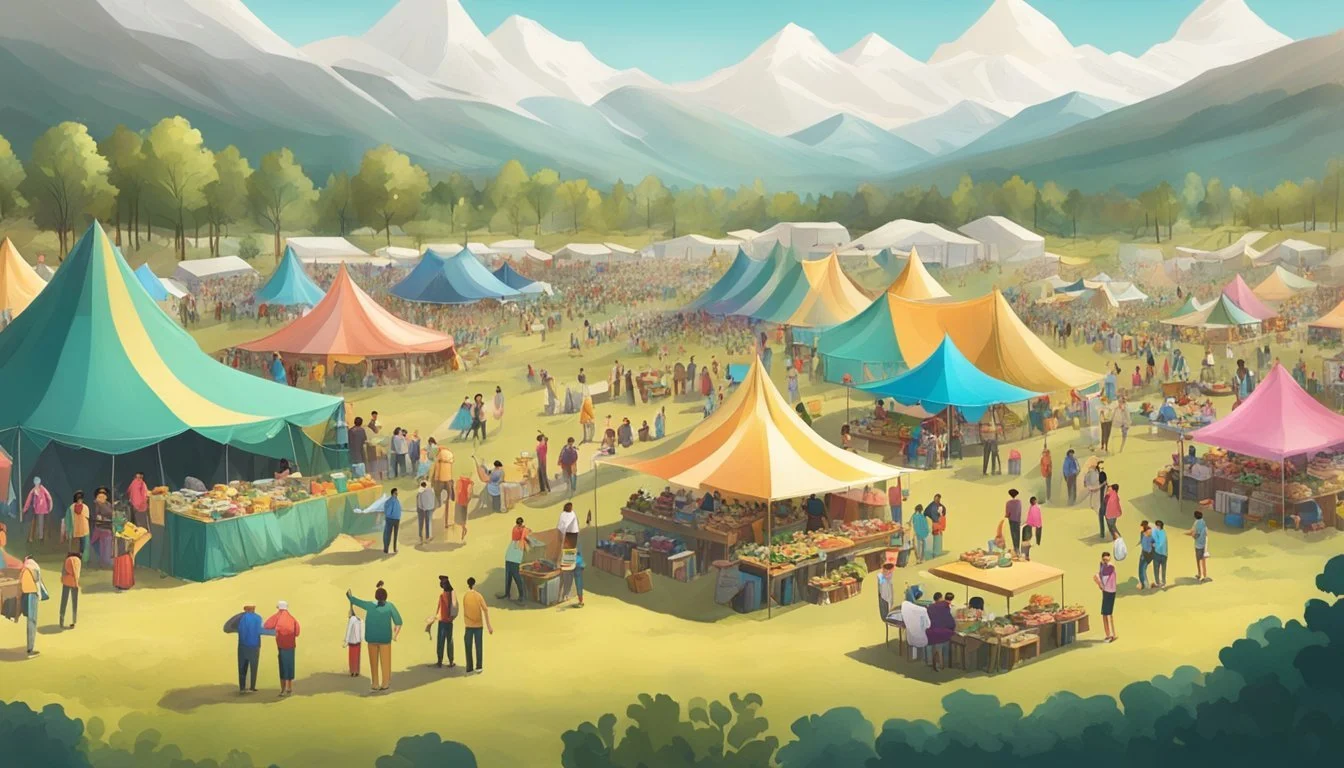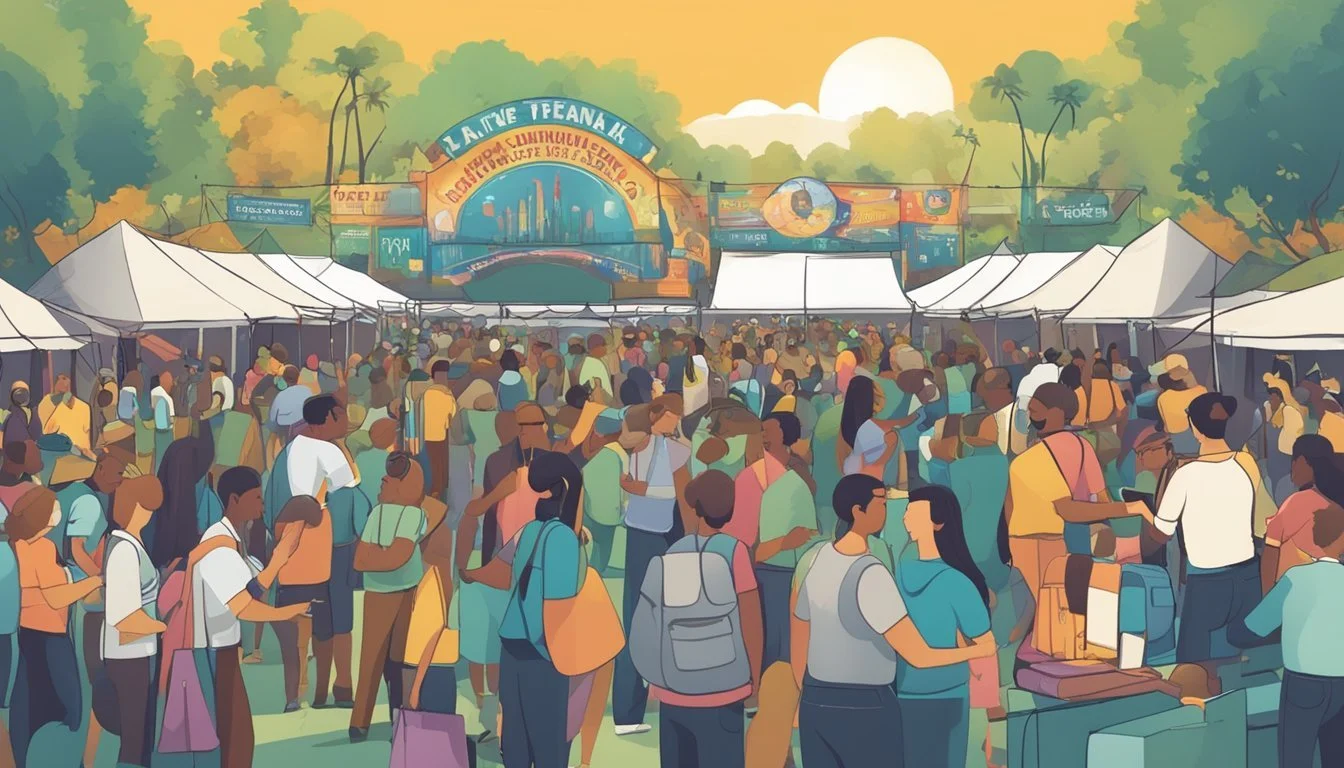Free Land for Music Festivals
Hosting Events Successfully
Hosting a music festival on free land can turn your property into a vibrant community hub, bringing people together through the shared love of music. Music festivals have grown in popularity, offering a unique experience that combines entertainment with social engagement. By transforming your land into a venue for these events, you provide an essential space where local culture and talent can flourish.
Successful music festivals require careful planning and thoughtful amenities that cater to both performers and attendees. Considerations include the accessibility of the location, the availability of amenities, and ensuring the experience resonates with the community's needs. From vendor stalls offering local crafts to live music that sets the perfect tone, each detail contributes to creating an unforgettable event.
Whether it’s a small gathering featuring local artists or a larger festival attracting renowned performers, hosting music events on your land can revitalise the local community. With the right approach, your property could become a sought-after destination, fostering a sense of community and making a lasting impact on all who attend.
Laying the Groundwork
Starting with a clear mission and vision, establishing a budget, and identifying the target audience are critical steps in laying a solid foundation for hosting a successful music festival on free land.
Understanding the Mission and Vision
Defining the mission and vision provides clarity and direction. The mission should encapsulate the purpose of the festival, whether it's to promote local artists, celebrate a genre, or create a communal experience.
The vision outlines long-term aspirations and what the festival aims to achieve over time. Involve professionals with event planning expertise to ensure these elements align with the overall festival goals and deliver a coherent message to all stakeholders.
Establishing Your Festival Budget
Creating a detailed budget is vital to managing costs and ensuring profitability. Begin by listing all potential expenses, including permits, equipment rental, and staff salaries.
Seek cost-effective solutions without compromising the festival quality. For example, partnering with local vendors or volunteers can help reduce expenses. Continuously monitor and adjust the budget to reflect any changes or unexpected costs.
Identifying the Target Audience
Pinpointing the target audience is essential for effective marketing and planning. Consider factors such as age, music preferences, and spending habits.
Engage with potential festival-goers through surveys or social media to gather insights. Tailor the festival experience to meet their interests and expectations, ensuring a memorable and successful event.
Free Land Utilization
Effective utilization of free land for music festivals involves selecting the right location, ensuring proper permits and insurance, and evaluating the available space and amenities. Each aspect must be meticulously planned to guarantee a successful event.
Finding the Ideal Location
Begin by scouting for land that matches the festival's needs. Locations near urban areas can draw larger crowds, while rural sites may offer more freedom and lower costs. Accessibility is crucial, with proximity to highways and public transit options being ideal. Evaluating the surrounding environment for potential noise concerns and natural beauty can elevate the attendee experience. Additionally, consider lands with minimal environmental impact, and explore sustainable options to maintain ecological balance.
Securing Permits and Insurance
Securing the necessary permits and insurance is vital for any festival venue. Contact local authorities early to understand regulations and timelines. Permits might cover aspects like noise, alcohol sales, and temporary structures. Inspections may be required to ensure safety standards. Insurance is equally essential, covering liabilities such as accidents, property damage, and cancellation. Partner with insurance experts who specialize in event coverage to navigate these requirements seamlessly. Be prepared with an emergency response plan, as this can be a deciding factor in permit approvals.
Assessing Size and Facilities
Assessing the land’s size and existing facilities helps determine its suitability. A larger property allows more attendees and diverse activities but requires more planning and infrastructure. Identify existing amenities like bathrooms, parking, and electrical hookups. If these are lacking, temporary installations will be necessary, impacting budget and logistics. Evaluate the terrain’s layout for natural divisions that can help organize the festival into sections, such as stages, food areas, and camping sites. This layout planning ensures smooth traffic flow and enhances the overall event experience.
Event Logistics and Planning
Effective event logistics and thorough planning are crucial for hosting successful music festivals on free land. This section delves into how to manage transport and accessibility, coordinate event staff and security, and design festival layout and amenities.
Managing Transport and Accessibility
A well-crafted transport plan is essential for ensuring smooth traffic flow to and from the event. Onsite parking should be ample and clearly marked. Utilizing shuttle services can reduce congestion around the event area.
Accessibility for attendees, including those with disabilities, must be considered. Providing designated accessible parking spots and pathways ensures everyone can enjoy the event. Signage and staff directions minimize confusion and help maintain order.
Collaboration with local authorities aids in managing traffic control. Pre-event communication about available transport options enhances attendee experiences.
Coordinating Event Staff and Security
Effective coordination of event staff and security creates a safe and enjoyable environment. Assigning roles to volunteers and professional staff based on their expertise ensures that all areas are covered.
Security personnel should be strategically placed at entrance points, stage areas, and around the perimeter to handle crowd control and emergencies. Clear communication channels among staff members facilitate quick response times. It is beneficial to have trained medical staff on-site to manage potential health issues.
Regular briefings keep the team updated on event schedules and any critical changes. Security checks at entrances help maintain a secure and controlled environment.
Designing Layout and Amenities
Designing an efficient layout for the festival site enhances the overall attendee experience. The main stage should be positioned to accommodate the largest audience, with clear line-of-sight and adequate lighting.
Amenities such as restrooms, food and drink stations should be evenly distributed across the site to prevent overcrowding in specific areas. Portable restrooms should be abundant and strategically placed for easy access.
Emergency exits and pathways should be clearly marked and unobstructed. Seating areas and shaded spots provide attendees with places to rest, contributing to their comfort and safety. Using a mix of maps and on-site signage ensures attendees can navigate the festival grounds efficiently.
Experience Enhancement
Enhancing the festival experience involves curating diverse music and entertainment, incorporating engaging activities and themes, and ensuring proper food and accommodation options. These elements work together to create a memorable event.
Curating Music and Entertainment
To elevate the festival, select a mix of musicians, DJs, and performers. Featuring a variety of genres, from rock concerts to serene garden picnics, caters to different tastes. Notable music festivals like Coachella have succeeded by booking a range of high-profile acts.
Consider including both well-known and emerging artists. This not only draws crowds but also supports new talent. Additionally, schedule performances thoughtfully to maintain audience engagement. Late-night discos or themed parties add an exciting edge to the experience.
Incorporating Activities and Themes
Activities and themes can significantly boost attendee engagement. Consider offering creative workshops, fitness sessions like yoga, and interactive art installations. These provide various touchpoints for attendees to connect with the event.
Themes unify the festival’s aesthetic and program. For example, a retro theme might feature vintage costumes, old-school music, and decor. A cohesive theme enhances the atmosphere and can guide marketing efforts and merchandising. Festivals with strong themed elements often leave a lasting impression.
Facilitating Food and Accommodation
Ensuring satisfying food and accommodation is crucial. Food trucks and local caterers offer a diverse array of options, from gourmet meals to casual snacks. This variety caters to different dietary needs and preferences, enhancing the visitor experience.
Accommodation options should range from basic camping to luxury glamping, providing choices that suit different budgets and comfort levels. On-site amenities such as showers and restrooms ensure convenience. Good accommodation and food services keep guests comfortable and satisfied, encouraging return visits.
Marketing and Promotion
Successfully marketing and promoting a music festival hosted on free land requires a strategic approach incorporating social media, partnerships, and community engagement. Effectively utilizing online platforms, crafting a comprehensive marketing strategy, and fostering local collaborations are key practices.
Leveraging Social Media and Online Platforms
Promoting a music festival through social media channels like Facebook, Instagram, and Twitter can vastly increase ticket sales and overall event exposure.
Creating visually appealing content and engaging posts can attract potential attendees. Utilizing Instagram stories and reels to share behind-the-scenes looks and artist announcements is beneficial. Developing a dedicated landing page ensures a central point for all event information, facilitating easy ticket purchases and updates.
Including festival details on online event directories can reach wider audiences. Regularly updating and engaging with followers on platforms like LinkedIn can also attract sponsorships and professional collaborations. These strategies are crucial for successfully leveraging digital spaces for optimal festival promotion.
Developing a Marketing Strategy
A well-structured marketing strategy is imperative for ensuring that the festival reaches its target audience effectively.
Identifying the festival's unique selling propositions (USPs) helps in crafting compelling messages that resonate with potential attendees. Detailed planning around promotions, including early bird ticket sales, discounts, and merch bundles, can drive initial interest and generate buzz. Investing in sponsorships not only provides financial support but also expands promotional reach through the sponsor's established networks.
Deploying a mix of online and offline marketing tactics such as email campaigns, influencer partnerships, and traditional media ads ensures diverse audience engagement. Continuously analyzing the effectiveness of these strategies through attendee feedback and sales metrics refines future marketing efforts.
Engagement through Local Collaborations
Working closely with local businesses and the community ensures the festival gains local support and visibility.
Partnering with nearby shops, restaurants, and artisans for synergistic promotions can enhance attendee experience and boost local commerce. Collaborations with local artists and performers not only enrich the festival lineup but also attract their dedicated followers, expanding the event's reach.
Hosting pre-event workshops or mini-concerts in local venues provides additional touchpoints for engagement. Sponsorships or in-kind contributions from local enterprises can also reduce costs and foster a strong community partnership. Building these relationships ensures sustained support and a more deeply connected festival experience for all involved.
Sales and Customer Service
Efficient sales strategies and excellent customer service are crucial for hosting successful music festivals on free land. Properly pricing tickets and effectively gathering and responding to attendee feedback can significantly enhance the event's reputation and profitability.
Ticket Pricing and Sales Strategies
Determining the appropriate ticket prices is vital for attracting the desired number of attendees while ensuring the festival remains financially viable. Consider the target audience, event purpose, and competing festivals' pricing. Offering various ticket tiers, such as early bird, VIP, and group discounts, can cater to different budgets.
Utilize online ticket sales platforms like Events.com or Eventbrite to streamline the sales process. Collect contact information during ticket sales to build a comprehensive attendee database for future events. It's beneficial to provide add-ons like merchandise or meal packages to boost revenue. A clear refund policy helps build trust and enhances the overall customer experience.
Cultivating Attendee Feedback and Support
Soliciting feedback from attendees is essential for improving future festivals and ensuring high levels of customer satisfaction. Use post-event surveys to gather insights on various aspects such as the festival's organization, ticket pricing, and overall experience.
Encourage testimonials to highlight positive experiences and share them on promotional materials and social media. Make it easy for attendees to reach out for support by providing clear contact information. Swift and courteous responses to inquiries or complaints demonstrate commitment to exceptional customer service. Engaging with attendees through follow-up emails or social media can also foster a loyal festival community.
Post-Event Management
Effective post-event management is crucial for ensuring the success and sustainability of future music festivals. Key tasks include analyzing the event's impact and gathering testimonials and photos.
Analyzing the Event's Impact
Evaluation starts the day after the festival ends. Organizers should collect data on attendance, local economic impact, and environmental effects. Key metrics often include visitor numbers, traffic patterns, and waste produced.
Environmental assessments focus on how much litter was generated and the success rate of recycling programs. Economic impact is measured through revenue generated for local businesses and vendors. Surveys and feedback from locals and visitors help in understanding what worked and what didn’t.
Gathering Testimonials and Photos
Testimonials and photos serve as powerful marketing tools for future events. Gathering feedback from attendees, vendors, and local residents brings valuable insights. This can be done through online surveys, social media polls, and post-event interviews.
High-quality photos capture the essence of the festival. Encouraging visitors to share their images on social media with event-specific hashtags is effective. These visual assets not only preserve memories but also attract interest for upcoming festivals.







